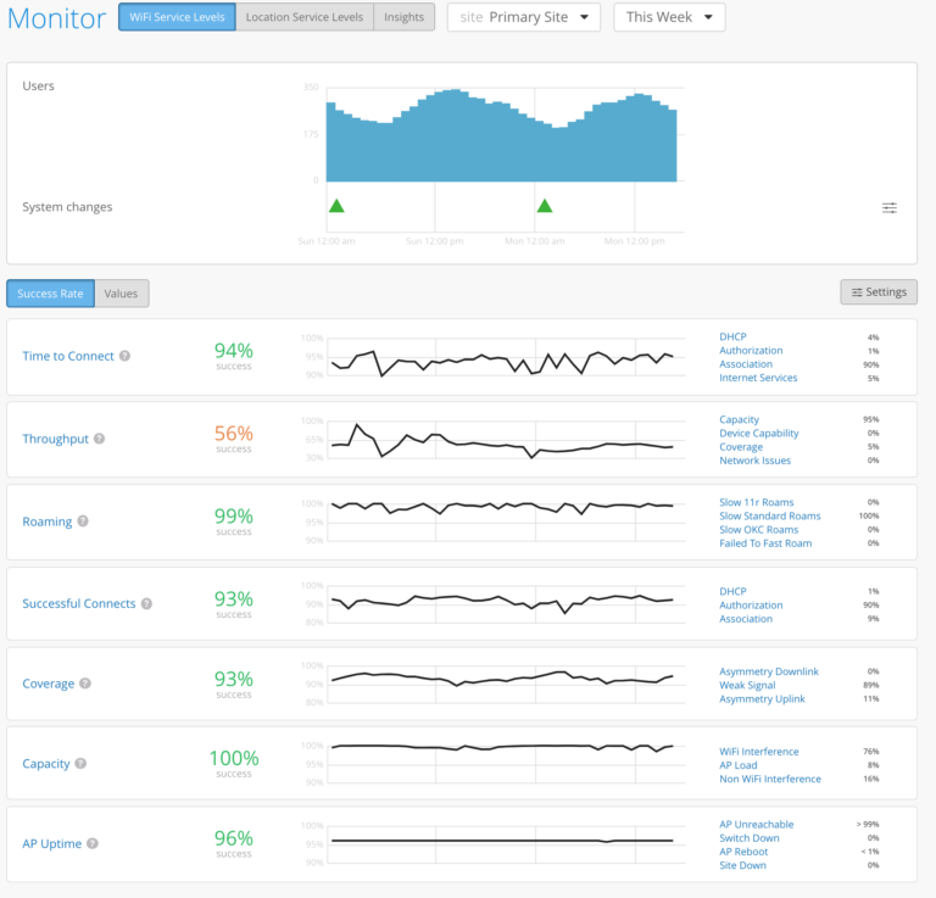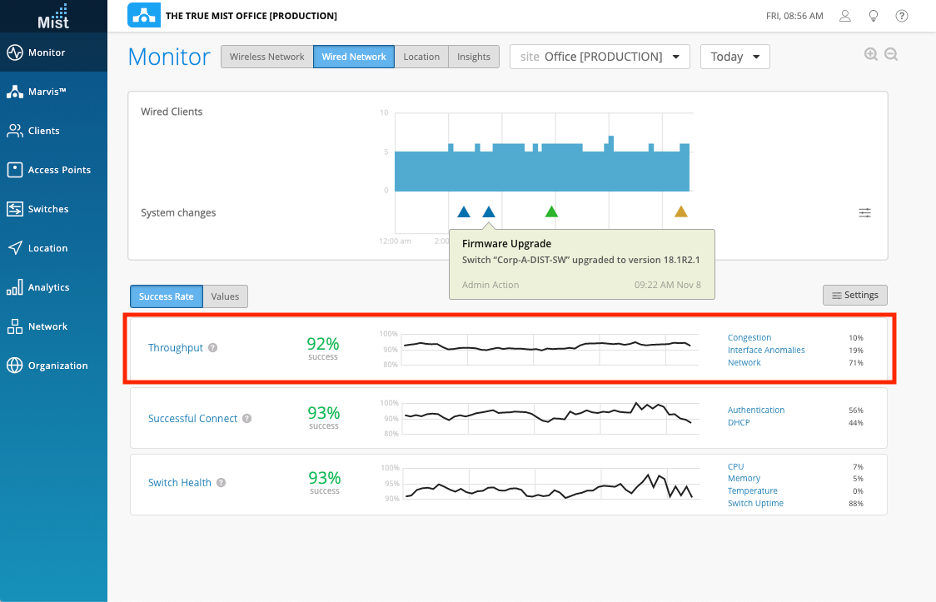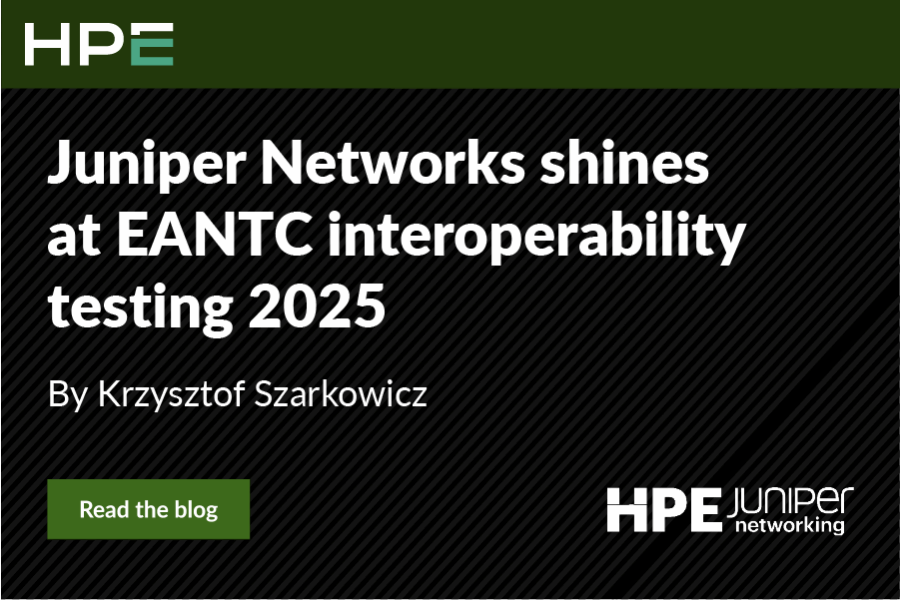With the newly opened additional 1,200 MHz in the 6 GHz band for Wi-Fi 6E by the FCC, and with clients and infrastructure becoming available in the next few years, customers will soon be able to realize the full potential of multigigabit Wi-Fi!
Now, more than ever, it’s critical for IT teams to review network infrastructure and ensure their access layer switching can support the leap to Wi-Fi 6E. In this article, we will discuss two key areas for consideration: Multigigabit Ethernet and Power over Ethernet.
Multigigabit Ethernet Switching
Wi-Fi 6E will drive up the access point uplink requirements and necessitate Multigigabit Ethernet (IEEE 802.3bz) connectivity to the access layer switching infrastructure. Multigigabit Ethernet is nothing new in the networking world, as we are used to seeing 2.5/5/10 Gbps capabilities on our access switches. However, before Wi-Fi 6E there hasn’t been a real need for more than 1 to 2.5 Gbps uplinks to our Wi-Fi access points.
Due to contention and resource allocation mechanisms in the previous generations of Wi-Fi, client device capabilities and efficient airtime utilization have been the limiting factors that haven’t seen real-world AP uplink throughput requirements go much above several hundred megabits per second. Even in high density environments and with APs operating in dual 5 GHz radio mode, we rarely see sustained uplink throughput touch 1 Gbps.
Thanks to the enhancements of Wi-Fi 6, such as OFDMA and spatial reuse, airtime utilization is now more efficient and higher rates of sustained throughput can be achieved. Throw into the mix that Wi-Fi 6E will not have any legacy protocol support or backwards compatibility mechanisms to slow it down, the 6 GHz spectrum now truly becomes the Wi-Fi superhighway we always dreamed of – wider channels, no legacy clients and OFDMA drive the need for speed!
So, let’s take a look at some speeds and numbers for Wi-Fi 6 in 5 GHz from an AP perspective.
- 20 MHz channel (most common, high density) – throughput will not exceed 1 Gbps even operating with 8 spatial streams.
- 40 MHz channel (also common, less channel reuse) – 8 spatial stream AP could exceed 1 Gbps if all clients were experiencing MCS 7 or 8.
- 80 MHz channel (rarely seen in the enterprise) – you could get 1 Gbps with 3 spatial streams and MCS 10 or 11.
- Remember, the higher the MCS – the closer the clients need to be to the AP, and the higher Signal-to-Noise Ratio (SNR) needs to be. And we’re talking all Wi-Fi 6 clients with capabilities of 3 to 4 spatial streams. These do not exist today (mid-2020).
Now to compare to Wi-Fi 6 in the 6 GHz band, or Wi-Fi 6E, where we expect 80 MHz channels to be the norm thanks to greater channel reuse, the PHY rate for just 2 spatial streams is 1.2 Gbps!
Wi-Fi 6E will see 5 Gbps AP uplinks become the minimum standard, and we expect to see APs that support 10 Gbps Ethernet uplinks and beyond.
Power Over Ethernet
As more radio chains and capabilities are added to Wi-Fi APs, such as sensor radios, humidity and pressure sensors, 16-element virtual BLE arrays, and IoT ports; it’s clear that more power is required. Wi-Fi 5 and 6 APs operate optimally with PoE+, or IEEE 802.3at Type 2, up to 30W per switch port. Keep in mind, Wi-Fi APs thus far support only two frequency bands: 2.4 GHz and 5 GHz.
With Wi-Fi 6E, it’s likely that we will see tri-band radios supporting 2.4, 5, and 6 GHz, which will require more power to the AP. We expect to see this across both Standard-Power Access Points (indoor/outdoor, operating in U-NII-5 and U-NII-7 bands) as well as Low-Power Access Points (indoor only, operating from U-NII-5 up to and including U-NII-8 bands). This will require PoE++, or 802.3bt Type 3 power, from each AP switchport in the access layer.
Guaranteeing Optimal Wi-Fi 6E Performance
With Mist Service Level Expectations (SLEs), we have visibility into the capabilities of client devices and the available airtime capacity, and hence throughput, across wireless and wired infrastructure. This will be essential in the era of Wi-Fi 6/6E and beyond to truly assure great user experiences.


Juniper EX Series Powered by Mist – The Network for the Next Decade
The Juniper EX series switches, which include a family of high-performance access switches that support 802.3bz (or Multigigabit Ethernet) and PoE++ (or 802.3bt 95W per port), is well positioned to help enterprises support these soaring bandwidth needs. Enterprises can assure great end-to-end user and IoT experiences with the complementary Mist Wired Assurance service that leverages AI and data science for actionable insights and self-driving capabilities.

























